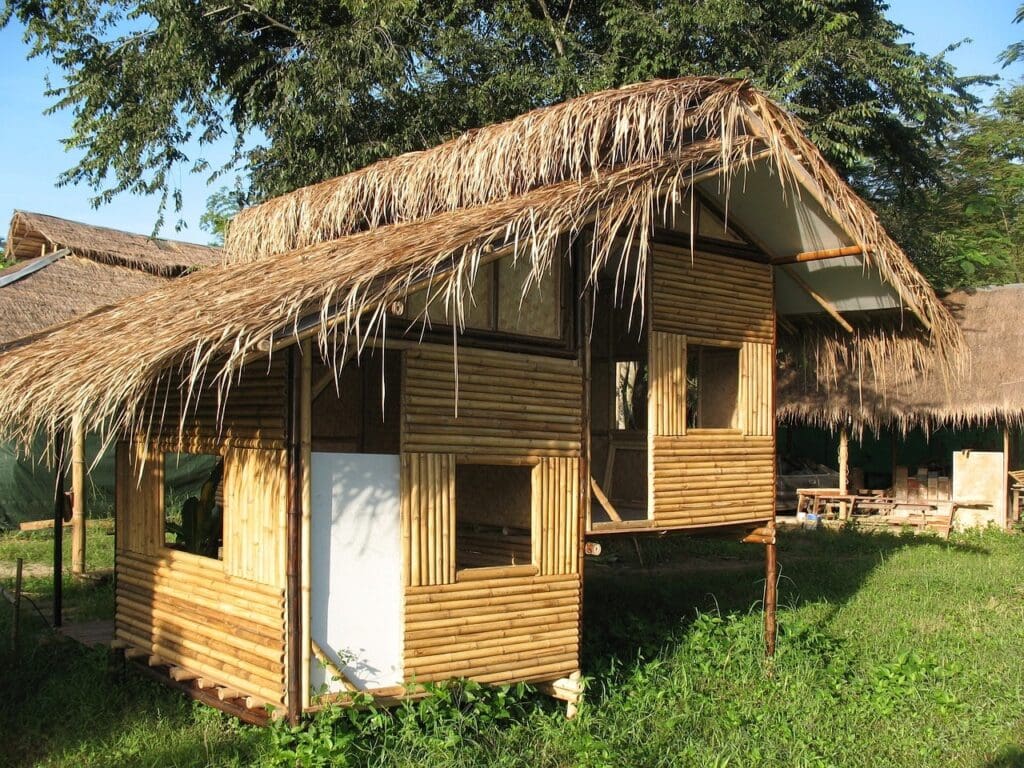Is Bamboo A Good Construction Material?
Bamboo, a versatile and sustainable plant, has garnered attention as a potential construction material. This article explores the question: is bamboo a good construction material?
In short, the answer is ‘yes’, bamboo is a good construction material for various building applications.
Key Takeaways
- Bamboo has a high strength-to-weight ratio, making it a strong and lightweight construction material.
- Bamboo is a renewable resource that requires minimal resources for cultivation, making it a cost-effective option compared to traditional materials.
- However, bamboo is susceptible to decay, moisture damage, and insect infestation, which raises durability concerns and requires proper treatment and maintenance.
- Bamboo has relatively low fire resistance, but its inherent fire prevention properties and high silica content contribute to its durability, making it a viable option for sustainable building practices in fire-prone areas.
Advantages of Bamboo as a Construction Material
High Strength-to-weight Ratio
One advantage of bamboo as a construction material is its high strength-to-weight ratio. This means that bamboo is strong and durable, yet lightweight, making it an ideal choice for various construction applications.
Bamboo has a higher strength-to-weight ratio compared to many other construction materials such as wood, steel, or concrete. This means that it can bear heavy loads and withstand significant forces while being relatively lightweight. This advantage allows for the construction of large structures without adding excessive weight or requiring additional support.
The high strength-to-weight ratio of bamboo also makes it easier to transport and handle during construction. Its lightweight nature reduces transportation costs and logistical challenges. Additionally, the lightweight property of bamboo enables easier assembly and installation on site, reducing construction time and labor requirements.
Furthermore, the strength and durability of bamboo make it suitable for a wide range of construction applications. It can be used for structural elements such as beams, columns, and trusses, as well as for non-structural components like flooring, walls, and roofing. Bamboo’s strength allows for the creation of stable and resilient structures that can withstand various environmental conditions, including earthquakes and high winds.
Renewable and Sustainable Material
In addition to its high strength-to-weight ratio, bamboo is also a renewable and sustainable material. It grows rapidly, with some species reaching maturity in just a few years. This rapid growth rate makes bamboo a highly renewable resource and reduces the environmental impact of its harvesting and use in construction.
Another sustainability trait is that it does not require replanting after harvesting. Unlike trees that take several decades to grow back, bamboo regenerates quickly from its root system, allowing for continuous growth and harvesting without depleting the resource.
Additionally, the cultivation of bamboo does not require excessive amounts of water, pesticides, or fertilizers. It can thrive in various soil conditions and climates, making it a versatile and resilient plant. This significantly reduces the environmental footprint associated with its cultivation compared to other crops.

To top it off, bamboo is able to absorb large amounts of carbon dioxide from the atmosphere. This makes it an effective tool in combating climate change. In fact, bamboo can absorb up to four times more carbon dioxide than trees, making it an excellent carbon sink.
Disadvantages of Bamboo as a Construction Material
Bamboo, although praised for its eco-friendliness and versatility, presents certain disadvantages as a construction material. Durability concerns arise due to bamboo’s susceptibility to decay and moisture damage over time.
Additionally, bamboo is not as strong as other traditional construction materials like steel or concrete. This means that it may not be suitable for certain structural applications or areas with high load-bearing requirements.
Another disadvantage of bamboo as a construction material is its limited availability in some regions. Bamboo is primarily grown in tropical and subtropical areas, so sourcing it can be challenging and expensive in other parts of the world. This can increase the overall cost of using bamboo in construction projects.
Furthermore, bamboo’s natural color and texture may not appeal to everyone’s aesthetic preferences. It may not be suitable for projects that require a specific design or a certain level of uniformity in appearance.
Lastly, bamboo’s fire resistance is lower compared to materials like steel or concrete. In case of a fire, bamboo structures may burn and collapse more easily, posing a safety risk.
Case Studies of Successful Bamboo Construction Projects
Several successful construction projects have demonstrated the effectiveness and versatility of bamboo as a sustainable alternative in the industry.
Bamboo offers numerous sustainability benefits, such as its rapid growth rate, high strength-to-weight ratio, and low carbon footprint. Additionally, it possesses cultural significance in many regions where it is abundant.
Examples of successful bamboo construction projects include the Green School in Bali and the Bamboo Sports Hall for Panyaden International School in Chiang Mai, showcasing its potential as a viable material for various types of structures.
Future Prospects and Innovations in Bamboo Construction
Innovations in sustainable construction practices are continuously being explored, with a particular focus on the future prospects of utilizing bamboo as a versatile and eco-friendly building resource.
Bamboo’s potential lies in its strength-to-weight ratio, rapid growth rate, and renewability. Innovative techniques such as laminated bamboo panels and engineered bamboo products have been developed to enhance its structural capabilities.
Sustainable design principles are being implemented to maximize energy efficiency and reduce environmental impact in bamboo construction projects.

